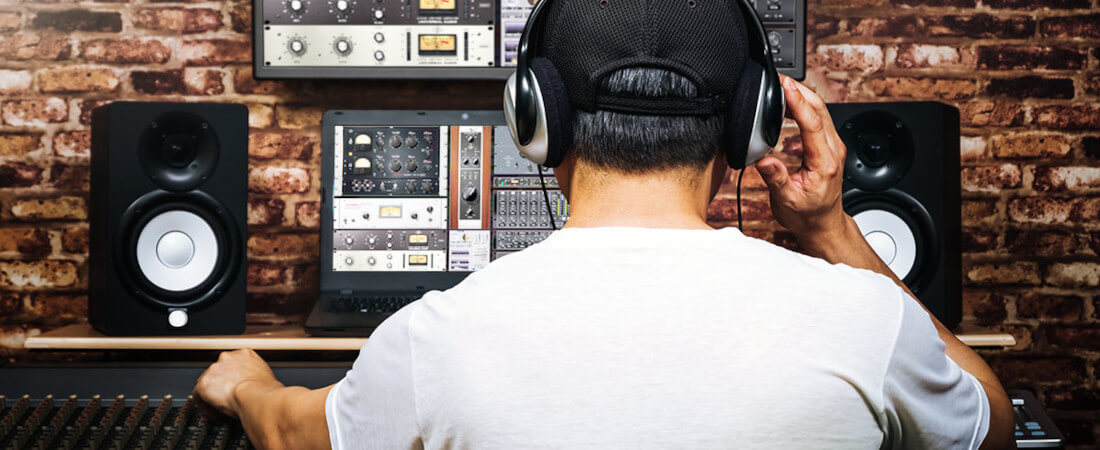SONG MASTERING
Song mastering is a crucial step in the music production process that involves fine-tuning and polishing a completed mix to achieve a professional and commercially viable sound. It focuses on enhancing the overall sonic characteristics of a song, ensuring consistency, balance, and clarity across different playback systems. Mastering involves tasks such as equalization, compression, stereo enhancement, and harmonic enhancement, as well as adjusting the overall volume levels and transitions between songs in an album. Additionally, mastering also involves preparing the final master for distribution, which may include encoding the audio into various file formats and applying metadata. Skilled mastering engineers use their expertise, specialized tools, and an acute ear for detail to bring out the best qualities of a song while maintaining its artistic intent.
Mixing and mastering a song difference
Mixing and mastering are two distinct stages in the music production process, each serving a specific purpose.
Mixing: Mixing is the process of combining individual audio tracks or elements, such as vocals, instruments, and effects, into a cohesive and balanced stereo or surround sound mix. It involves adjusting the levels, panning, and equalization of each element to create a pleasing and cohesive sonic blend. Other tasks in mixing include applying dynamics processing (compression, limiting, etc.), adding spatial effects (reverb, delay, etc.), and addressing any issues with the frequency balance, stereo image, or overall clarity of the mix. The goal of mixing is to create an engaging and well-balanced sonic representation of the recorded material.
Mastering: Mastering is the final step in the music production process and focuses on preparing the mixed tracks for distribution across different formats and playback systems. It involves fine-tuning the overall sound of the songs, ensuring consistency and compatibility across an album or EP. Mastering engineers apply various processes like equalization, compression, stereo enhancement, and harmonic enhancement to enhance the overall clarity, depth, and impact of the music. They also address technical aspects such as adjusting the overall volume levels, creating proper spacing between songs, and ensuring the tracks meet the required technical specifications for the intended distribution platforms. The goal of mastering is to optimize the sound quality and translation of the music across a wide range of playback systems.
In summary, mixing is the stage where individual tracks are blended together and balanced, while mastering is the final step that polishes the mixed tracks, prepares them for distribution, and ensures sonic consistency across the entire project. Mixing focuses on the micro-level details of individual tracks, while mastering looks at the macro-level aspects of the entire collection of songs.
What equipment do mastering engineers use?
Mastering engineers use a combination of hardware and software effects to shape the final sound of a song. Here are some commonly used tools:
-
Equalizers (EQ): EQs are used to adjust the frequency balance of a song, making precise cuts or boosts in specific frequency ranges to enhance clarity, balance, and tonal characteristics.
-
Compressors: Compressors control the dynamic range of a song, ensuring consistent volume levels and adding a sense of cohesion. They help to control peaks, add sustain, and enhance the overall balance of the mix.
-
Limiters: Limiters are used to prevent audio from exceeding a set volume threshold, ensuring that the final master doesn’t distort or clip when played on various playback systems. They provide a final level of volume control and help achieve competitive loudness levels.
-
Stereo Widening Tools: These tools expand the stereo image of a mix, creating a wider and more spacious soundstage. They add depth and dimension to the music, enhancing the stereo field.
-
Harmonic Exciters/Saturators: Harmonic exciters or saturators add subtle harmonic distortion or saturation to the mix, adding warmth, character, and richness. They can help to bring out details and make the music sound more vibrant.
-
Multiband Dynamics Processors: Multiband compressors or dynamic equalizers allow for independent control of different frequency bands, helping to address specific issues or balance the tonal characteristics across the frequency spectrum.
-
Reverb and Delay: Reverb and delay effects are used sparingly in mastering to add depth, create a sense of space, and enhance the overall ambience of the mix.
These effects can be applied using a combination of hardware processors, such as outboard EQs, compressors, and limiters, as well as software plugins within a digital audio workstation (DAW). The specific tools and techniques used by mastering engineers may vary depending on their preferences, the characteristics of the music being mastered, and the desired sonic outcome.
Best software mastering programs
There are several highly regarded mastering software programs available, each with its own strengths and features. While “best” is subjective and can vary depending on individual preferences and specific needs, here are three commonly acclaimed mastering software programs:
- iZotope Ozone: Ozone is a comprehensive mastering suite that offers a wide range of tools for mastering engineers. It includes modules for EQ, dynamics, harmonic excitation, stereo imaging, reverb, and more. Ozone provides both surgical precision and creative flexibility, with intuitive controls and extensive presets to streamline the mastering process.
- Steinberg WaveLab: WaveLab is a professional mastering software that offers a complete set of mastering features, including advanced audio editing, spectrum analysis, batch processing, and a wide range of mastering plugins. It provides a powerful and customizable workflow, along with extensive metering and analysis tools to ensure precise control over the mastering process.
- Ableton Live: While primarily known as a popular DAW for music production and performance, Ableton Live also offers powerful mastering capabilities. It includes a variety of built-in audio effects, such as EQ, compression, stereo imaging, and mastering-grade limiters. Its unique session view and flexible routing options make it a versatile choice for both mixing and mastering.
It’s important to note that the choice of mastering software depends on individual preferences, familiarity with the interface, desired workflow, and the specific requirements of the project. Other notable mastering software options include Steinberg Cubase, Magix Sequoia, and Adobe Audition, among others. Evaluating trial versions, seeking recommendations, and considering personal workflow preferences can help in determining the best mastering software for one’s specific needs. It is always good to be mentioned also, that if the final mix doesn`t sound good enough, whatever mastering software you use won`t fix all issues and won`t make miracles. Mastering is just polishing the final sound cutting the begging and end of the song, but all frequency and dynamic problems of the song must be fixed in the mixing process. Our mixing tips page can give you more insight on how to improve your mixes.
Frequently asked questions
Q: What format should be my song when I give it to the mastering engineer?
A: When providing your song to a mastering engineer, it is recommended to deliver the highest quality audio file available. The preferred format is typically a high-resolution, uncompressed file such as WAV or AIFF, with a minimum sample rate of 44.1 kHz and a bit depth of 24 bits. These formats preserve the maximum amount of detail and dynamic range, allowing the mastering engineer to work with the best possible source material for achieving optimal results.
Q: when using a mastering service is it better to give one channel mix or it can be on different stems for drums, music, and vocals?
A: When using a mastering service, it is generally preferred to provide a stereo mix of your song rather than separate stems for different elements such as drums, music, and vocals. Mastering engineers typically work with the final stereo mix to enhance the overall sound and achieve sonic balance across all elements of the song. Providing stems can limit the mastering engineer’s ability to make global adjustments and may introduce inconsistencies in the final master. However, if you have specific concerns or requirements, it’s always advisable to communicate with the mastering engineer beforehand to discuss the best approach for your project.
Blog Articles
Mixing In Key Or Harmornic Mixing
Mixing in key refers to the practice of aligning the musical elements in a mix to ensure they are harmonically compatible. It involves considering the key or musical...
Using a reference track to improve your mixes
» Setting a benchmark » Developing a better ear » Improving your techniques » Avoid common mistakes Mixing is a complex process that involves balancing the different...
Using a limiter or clipper in music mixing and production
WHEN AND HOW TO USE A LIMITER MIXING MUSICAudio mixing and production involve a range of techniques and tools to shape the sound of a track. One essential tool in this...
Extras
Blog
Other News
Contact Page
About Us



